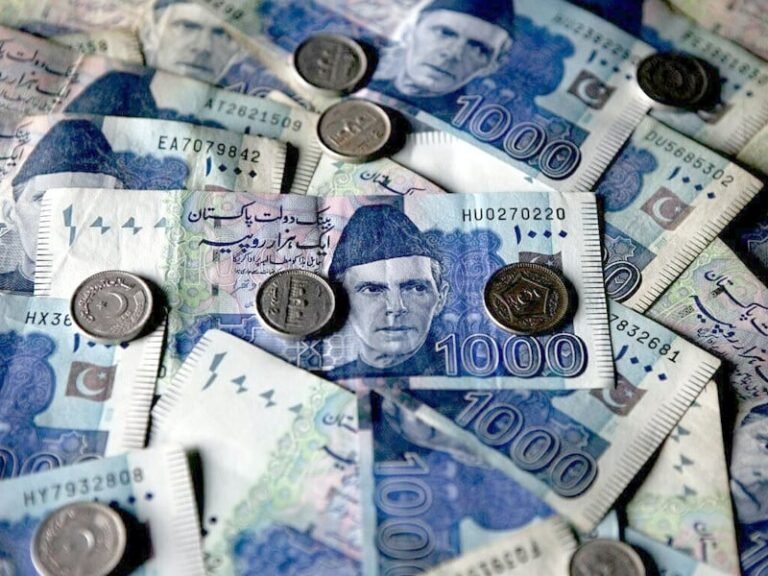KARACHI:
Several banks are offering new financing to businesses at rates below the Karachi Inter-Bank Offered Rate (KIBOR), as the benchmark six-month KIBORrepresenting the interest rate at which banks lend to each otherdropped by 63 basis points, reaching a 19-month low of 17.94% on Thursday.
Speaking to The Express Tribune, Saad Hanif, Head of Research at Ismail Iqbal Securities, explained that the drop in KIBOR, coupled with the offer of new credit to the private sector at below the benchmark rate, is creating monetary easing. This shift is enabling capital-intensive industries such as cement, steel, and other construction sectors to resume borrowing from banks, thereby supporting economic activity and growth in the country.
Hanif noted that some banks are offering new credit to businesses at KIBOR minus 25-50 basis points to avoid additional taxes imposed for the calendar year 2024. He recalled that the government decided to levy extra taxes on banks whose advance-to-deposit ratio (ADR)the ratio of their lending to the private sector against total depositsfalls below 50% this year.
To avoid these additional taxes, banks have two options: increase advances to the private sector or reduce their deposits. According to Hanif, top- to mid-tier banks in the country are among those offering advances at reduced interest rates.
The cut in KIBOR and the new lending to businesses at lower rates suggest that financial institutions expect the central bank to make a third consecutive cut in its key policy rate (benchmark interest rate) by 1-1.5% at the upcoming monetary policy meeting scheduled for September 12. The current policy rate stands at 19.5%.
Citing State Bank of Pakistan (SBP) data, Arif Habib Limited reported that KIBOR was reduced by 5-80 basis points across various tenures1-month, 3-month, 6-month, and 12-monthon Thursday compared to Wednesday.
Topline Research highlighted that the benchmark six-month KIBOR slipped below 18% for the first time in 19 months.
This latest reduction in KIBOR follows a significant drop in cut-off yields (the rate of return on government debt securities such as T-bills) by 74-148 basis points on three- to 12-month government papers in an auction held on Wednesday. The drop is based on projections that the inflation rate will fall into single digits in August.
Hanif further mentioned that while the SBP might implement a rate cut in September, it is likely to avoid deeper cuts afterward. He predicted that the central bank would maintain a larger real interest rate (current policy rate minus current inflation rate) of around 6-7% in FY25.
Research houses anticipate that the central bank could reduce its key policy rate to 15-16% by the end of the current fiscal year on June 30, 2025.
However, an aggressive reduction in the policy rate, driven by a potential drop in inflation to single digits in August and beyond, could lead to a rapid depletion of foreign exchange reserves in Pakistan’s import-led economy, which is already struggling with low reserves. This situation could destabilise the rupee-dollar exchange rate and prompt foreign portfolio investors to withdraw their US dollar-based investments from T-bills. “We cannot afford a depletion in foreign exchange reserves or a return of volatility in the rupee-dollar exchange rate,” Hanif warned.
He also noted that the negative impacts of cheaper banking credit could include a rise in non-performing loans (NPLs), increased demand for US dollars for imports, and a reversal of the current downward trend in inflation in the future.
Given these risks, Hanif suggested that the central bank might maintain a tight monetary policy ahead of the new $7 billion IMF loan programme for Pakistan. Although the programme has been delayed by about a month, the IMF Executive Board is expected to give its final approval next month. The reduction in lending rates to the private sector is crucial for supporting economic activities. The central bank has projected economic growth in the range of 2.5-3.5% in FY25, with inflation expected to fall to 11.5-13.5%, roughly half of the previous year’s rate.


